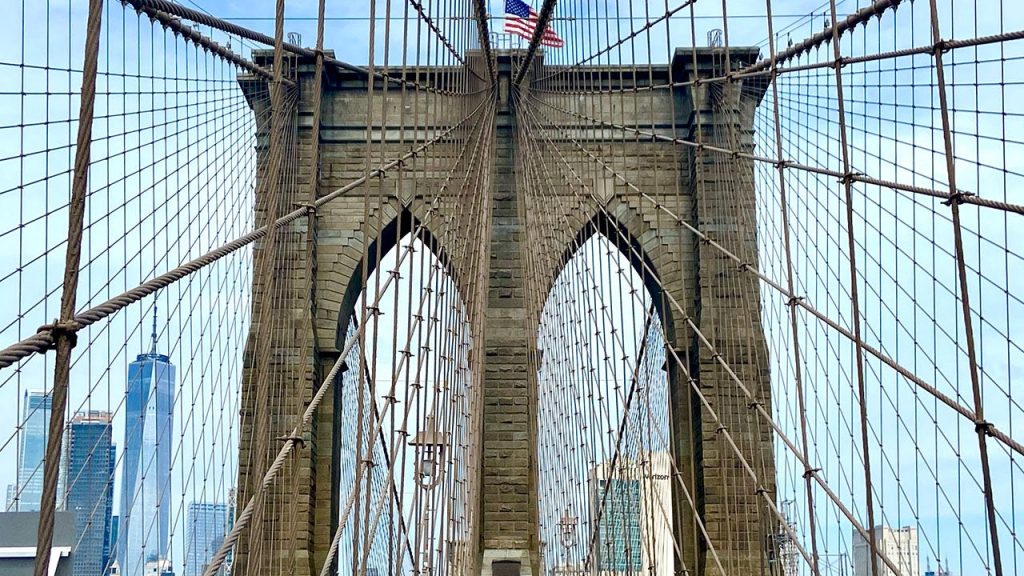On May 24, 1883, the Brooklyn Bridge opened as the longest suspension bridge in the world, connecting Manhattan and Brooklyn over the East River. Designed by John A. Roebling, construction began in 1869 and was completed in 1883. The dedication ceremony was attended by thousands, including President Chester Arthur and New York Gov. Grover Cleveland, with Emily Roebling, the wife of the chief engineer, crossing the bridge first amid fireworks that illuminated the sky. The bridge faced many obstacles, including spanning the swift waters of the East River and rising high enough to allow tall ships to pass beneath.
Hailed as “The Eighth Wonder of the World,” the Brooklyn Bridge was a remarkable feat of civil engineering. The two granite foundations were built using timber caissons sunk to depths of 44 feet on the Brooklyn side and 78 feet on the New York side. However, construction under such conditions led to over a hundred workers suffering from compression sickness, or the “bends,” caused by nitrogen bubbles appearing in the bloodstream due to rapid decompression. Despite these challenges and construction accidents, the bridge was completed and designated a National Historic Landmark in 1964 and a National Historic Civil Engineering Landmark in 1972.
Following John Roebling’s death, his son Washington Roebling took over as chief engineer but became paralyzed two years into construction due to the bends. His wife, Emily Roebling, acted as chief engineer on site in his place, making her the first female field engineer. Emily oversaw the project’s completion, consulting with contractors and assistant engineers, even though she was not granted an official title. The bridge underwent a comprehensive reconstruction between 1944 and 1954, strengthening trusses, installing new cables, widening roadways, and constructing new approach ramps, with additional ramps to the FDR Drive opening in 1969.
Today, the Brooklyn Bridge remains a historic landmark, supporting six lanes of vehicles and a shared pedestrian and bicycle path. The New York City Department of Transportation reports that over 4,000 pedestrians and 3,100 bicyclists cross the bridge’s elevated boardwalk daily, while more than 120,000 vehicles use the roadway. In September 2021, a two-way protected bike lane opened along the bridge, further enhancing its accessibility and safety for cyclists. The bridge continues to be an iconic symbol of New York City and a testament to the ingenuity and determination of its designers and builders.


